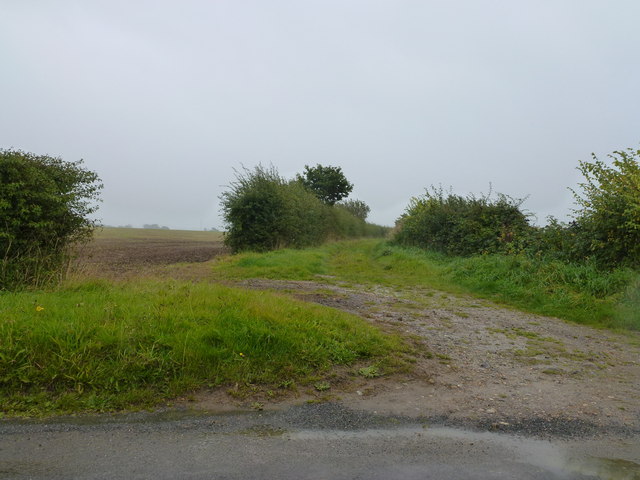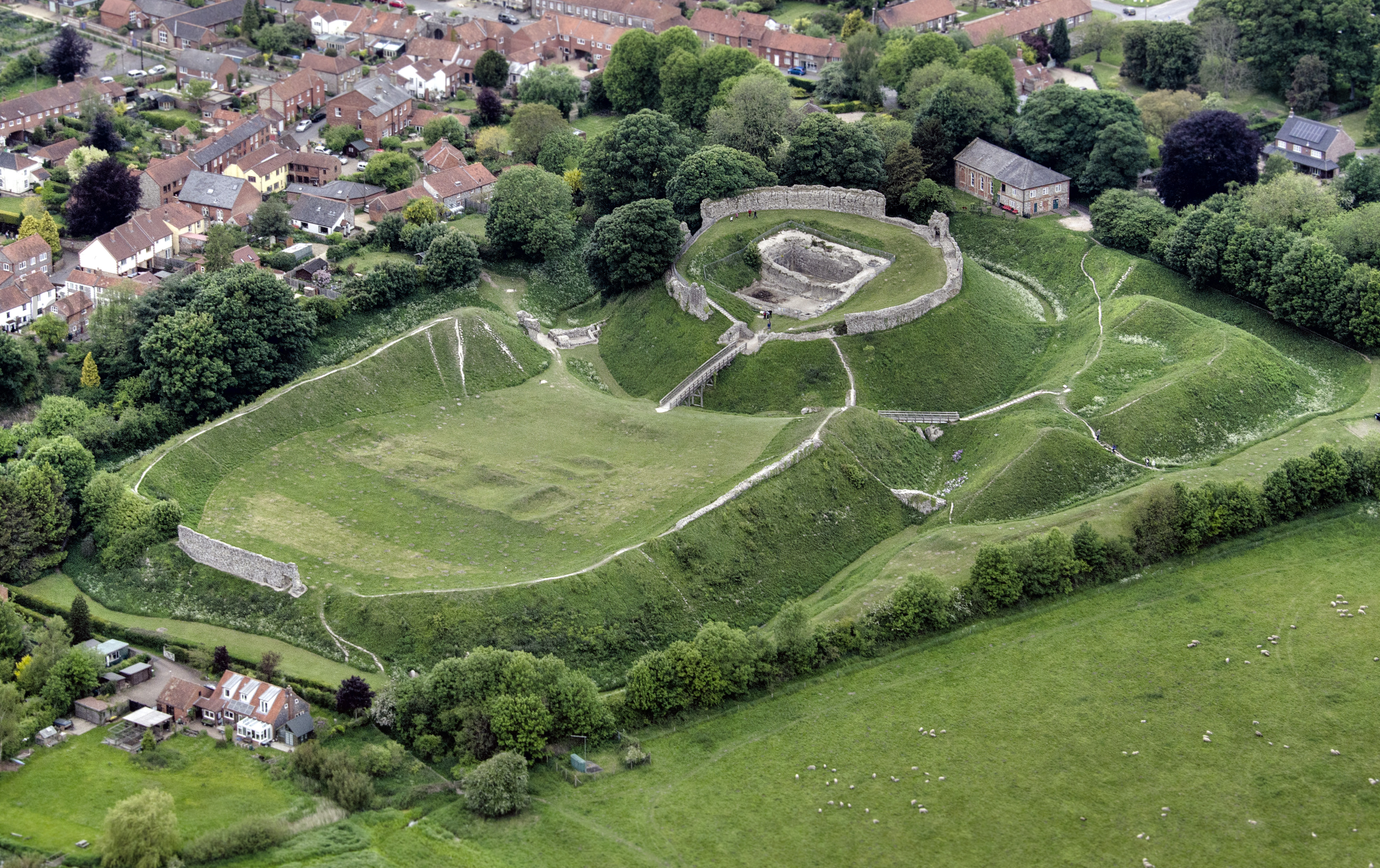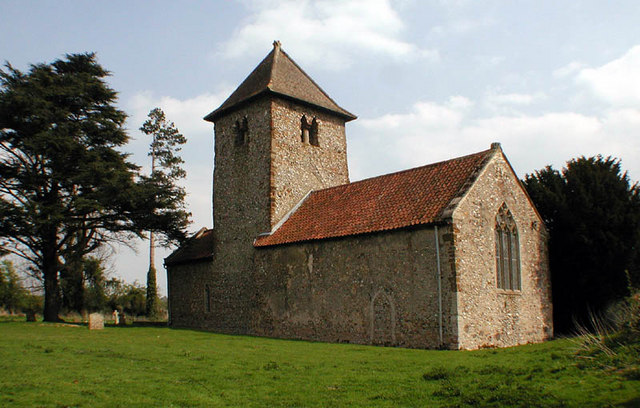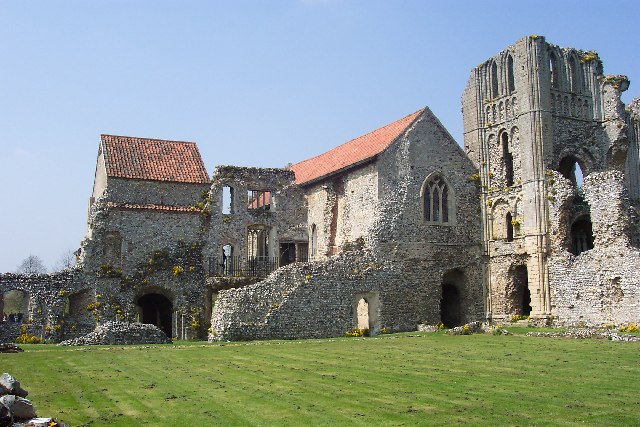Hungry Hill
Hill, Mountain in Norfolk Breckland
England
Hungry Hill

Hungry Hill, Norfolk is a small but prominent hill located in the county of Norfolk, England. Situated near the village of Stiffkey, Hungry Hill is known for its picturesque landscape and historical significance. Despite its name, the hill does not have any mountains or steep inclines, but rather boasts a gentle slope with an elevation of around 60 meters.
The origins of the name "Hungry Hill" are uncertain, but it is believed to be derived from the Norfolk dialect, referring to the hill's barren nature or lack of vegetation. The hill is covered with grass, heather, and scattered shrubs, offering a beautiful and tranquil setting for nature enthusiasts and hikers.
While not particularly challenging for experienced climbers, Hungry Hill provides breathtaking views of the surrounding countryside and the nearby coast. On clear days, visitors can enjoy panoramic vistas of the North Sea and the salt marshes of the Norfolk coastline.
Historically, Hungry Hill has been an important landmark in the region. It is said to have served as a lookout point for smugglers during the 18th and 19th centuries, due to its strategic location overlooking the sea. The hill also played a role in World War II when it was used as a defense position against potential German invasions.
Today, Hungry Hill continues to attract visitors who appreciate its natural beauty and historical significance. It offers a peaceful retreat from the hustle and bustle of urban life, providing an opportunity to connect with nature and explore Norfolk's rich heritage.
If you have any feedback on the listing, please let us know in the comments section below.
Hungry Hill Images
Images are sourced within 2km of 52.693157/0.70582205 or Grid Reference TF8214. Thanks to Geograph Open Source API. All images are credited.

![The castle at Castle Acre [1] A view showing the bank and ditch of the castle which has been described as having some of the finest surviving earthworks in the country.
A shell keep castle with an earlier house being converted to a keep. Built and extended between the 11th and 13th centuries, the castle is listed, grade I, and it and the remains of the defences of the Norman planned town is a scheduled ancient monument. There is much detail and history at: <span class="nowrap"><a title="https://www.historicengland.org.uk/listing/the-list/list-entry/1171480" rel="nofollow ugc noopener" href="https://www.historicengland.org.uk/listing/the-list/list-entry/1171480">Link</a><img style="margin-left:2px;" alt="External link" title="External link - shift click to open in new window" src="https://s1.geograph.org.uk/img/external.png" width="10" height="10"/></span> and at: <span class="nowrap"><a title="https://www.historicengland.org.uk/listing/the-list/list-entry/1017909" rel="nofollow ugc noopener" href="https://www.historicengland.org.uk/listing/the-list/list-entry/1017909">Link</a><img style="margin-left:2px;" alt="External link" title="External link - shift click to open in new window" src="https://s1.geograph.org.uk/img/external.png" width="10" height="10"/></span>](https://s2.geograph.org.uk/geophotos/05/17/32/5173206_ff8d17a2.jpg)
![The castle at Castle Acre [2] The curtain wall surrounding the keep.
A shell keep castle with an earlier house being converted to a keep. Built and extended between the 11th and 13th centuries, the castle is listed, grade I, and it and the remains of the defences of the Norman planned town is a scheduled ancient monument. There is much detail and history at: <span class="nowrap"><a title="https://www.historicengland.org.uk/listing/the-list/list-entry/1171480" rel="nofollow ugc noopener" href="https://www.historicengland.org.uk/listing/the-list/list-entry/1171480">Link</a><img style="margin-left:2px;" alt="External link" title="External link - shift click to open in new window" src="https://s1.geograph.org.uk/img/external.png" width="10" height="10"/></span> and at: <span class="nowrap"><a title="https://www.historicengland.org.uk/listing/the-list/list-entry/1017909" rel="nofollow ugc noopener" href="https://www.historicengland.org.uk/listing/the-list/list-entry/1017909">Link</a><img style="margin-left:2px;" alt="External link" title="External link - shift click to open in new window" src="https://s1.geograph.org.uk/img/external.png" width="10" height="10"/></span>](https://s1.geograph.org.uk/geophotos/05/17/32/5173209_17297340.jpg)
![The castle at Castle Acre [3] Looking south at the outer bailey.
A shell keep castle with an earlier house being converted to a keep. Built and extended between the 11th and 13th centuries, the castle is listed, grade I, and it and the remains of the defences of the Norman planned town is a scheduled ancient monument. There is much detail and history at: <span class="nowrap"><a title="https://www.historicengland.org.uk/listing/the-list/list-entry/1171480" rel="nofollow ugc noopener" href="https://www.historicengland.org.uk/listing/the-list/list-entry/1171480">Link</a><img style="margin-left:2px;" alt="External link" title="External link - shift click to open in new window" src="https://s1.geograph.org.uk/img/external.png" width="10" height="10"/></span> and at: <span class="nowrap"><a title="https://www.historicengland.org.uk/listing/the-list/list-entry/1017909" rel="nofollow ugc noopener" href="https://www.historicengland.org.uk/listing/the-list/list-entry/1017909">Link</a><img style="margin-left:2px;" alt="External link" title="External link - shift click to open in new window" src="https://s1.geograph.org.uk/img/external.png" width="10" height="10"/></span>](https://s2.geograph.org.uk/geophotos/05/17/32/5173214_97789785.jpg)
![The castle at Castle Acre [4] The remains of the keep, converted from an 11th century unfortified house.
A shell keep castle with an earlier house being converted to a keep. Built and extended between the 11th and 13th centuries, the castle is listed, grade I, and it and the remains of the defences of the Norman planned town is a scheduled ancient monument. There is much detail and history at: <span class="nowrap"><a title="https://www.historicengland.org.uk/listing/the-list/list-entry/1171480" rel="nofollow ugc noopener" href="https://www.historicengland.org.uk/listing/the-list/list-entry/1171480">Link</a><img style="margin-left:2px;" alt="External link" title="External link - shift click to open in new window" src="https://s1.geograph.org.uk/img/external.png" width="10" height="10"/></span> and at: <span class="nowrap"><a title="https://www.historicengland.org.uk/listing/the-list/list-entry/1017909" rel="nofollow ugc noopener" href="https://www.historicengland.org.uk/listing/the-list/list-entry/1017909">Link</a><img style="margin-left:2px;" alt="External link" title="External link - shift click to open in new window" src="https://s1.geograph.org.uk/img/external.png" width="10" height="10"/></span>](https://s3.geograph.org.uk/geophotos/05/17/32/5173215_3c1181a8.jpg)
![Castle Acre priory [1] A general view of the remains with the west front being prominent.
The Cluniac Benedictine priory was founded circa 1089 and the remains are considered to be some of the finest monastic remains in Norfolk. The remains are listed, grade I, and the site is a scheduled ancient monument. There is much history and a wealth of detail at: <span class="nowrap"><a title="https://www.historicengland.org.uk/listing/the-list/list-entry/1342389" rel="nofollow ugc noopener" href="https://www.historicengland.org.uk/listing/the-list/list-entry/1342389">Link</a><img style="margin-left:2px;" alt="External link" title="External link - shift click to open in new window" src="https://s1.geograph.org.uk/img/external.png" width="10" height="10"/></span> and at: <span class="nowrap"><a title="https://www.historicengland.org.uk/listing/the-list/list-entry/1015870" rel="nofollow ugc noopener" href="https://www.historicengland.org.uk/listing/the-list/list-entry/1015870">Link</a><img style="margin-left:2px;" alt="External link" title="External link - shift click to open in new window" src="https://s1.geograph.org.uk/img/external.png" width="10" height="10"/></span>](https://s1.geograph.org.uk/geophotos/05/17/44/5174497_9ab645eb.jpg)
![Castle Acre priory [2] The west front of the priory church stands almost to full height.
The Cluniac Benedictine priory was founded circa 1089 and the remains are considered to be some of the finest monastic remains in Norfolk. The remains are listed, grade I, and the site is a scheduled ancient monument. There is much history and a wealth of detail at: <span class="nowrap"><a title="https://www.historicengland.org.uk/listing/the-list/list-entry/1342389" rel="nofollow ugc noopener" href="https://www.historicengland.org.uk/listing/the-list/list-entry/1342389">Link</a><img style="margin-left:2px;" alt="External link" title="External link - shift click to open in new window" src="https://s1.geograph.org.uk/img/external.png" width="10" height="10"/></span> and at: <span class="nowrap"><a title="https://www.historicengland.org.uk/listing/the-list/list-entry/1015870" rel="nofollow ugc noopener" href="https://www.historicengland.org.uk/listing/the-list/list-entry/1015870">Link</a><img style="margin-left:2px;" alt="External link" title="External link - shift click to open in new window" src="https://s1.geograph.org.uk/img/external.png" width="10" height="10"/></span>](https://s3.geograph.org.uk/geophotos/05/17/44/5174499_7ee5e864.jpg)
![Castle Acre priory [3] The prior&#039;s lodging.
The Cluniac Benedictine priory was founded circa 1089 and the remains are considered to be some of the finest monastic remains in Norfolk. The remains are listed, grade I, and the site is a scheduled ancient monument. There is much history and a wealth of detail at: <span class="nowrap"><a title="https://www.historicengland.org.uk/listing/the-list/list-entry/1342389" rel="nofollow ugc noopener" href="https://www.historicengland.org.uk/listing/the-list/list-entry/1342389">Link</a><img style="margin-left:2px;" alt="External link" title="External link - shift click to open in new window" src="https://s1.geograph.org.uk/img/external.png" width="10" height="10"/></span> and at: <span class="nowrap"><a title="https://www.historicengland.org.uk/listing/the-list/list-entry/1015870" rel="nofollow ugc noopener" href="https://www.historicengland.org.uk/listing/the-list/list-entry/1015870">Link</a><img style="margin-left:2px;" alt="External link" title="External link - shift click to open in new window" src="https://s1.geograph.org.uk/img/external.png" width="10" height="10"/></span>](https://s1.geograph.org.uk/geophotos/05/17/45/5174521_7812b3c6.jpg)
![Castle Acre priory [4] A 16th century porch, built in front of a 12th century porch.
The Cluniac Benedictine priory was founded circa 1089 and the remains are considered to be some of the finest monastic remains in Norfolk. The remains are listed, grade I, and the site is a scheduled ancient monument. There is much history and a wealth of detail at: <span class="nowrap"><a title="https://www.historicengland.org.uk/listing/the-list/list-entry/1342389" rel="nofollow ugc noopener" href="https://www.historicengland.org.uk/listing/the-list/list-entry/1342389">Link</a><img style="margin-left:2px;" alt="External link" title="External link - shift click to open in new window" src="https://s1.geograph.org.uk/img/external.png" width="10" height="10"/></span> and at: <span class="nowrap"><a title="https://www.historicengland.org.uk/listing/the-list/list-entry/1015870" rel="nofollow ugc noopener" href="https://www.historicengland.org.uk/listing/the-list/list-entry/1015870">Link</a><img style="margin-left:2px;" alt="External link" title="External link - shift click to open in new window" src="https://s1.geograph.org.uk/img/external.png" width="10" height="10"/></span>](https://s0.geograph.org.uk/geophotos/05/17/45/5174528_5d31202d.jpg)
![Castle Acre priory [5] The guest lodgings.
The Cluniac Benedictine priory was founded circa 1089 and the remains are considered to be some of the finest monastic remains in Norfolk. The remains are listed, grade I, and the site is a scheduled ancient monument. There is much history and a wealth of detail at: <span class="nowrap"><a title="https://www.historicengland.org.uk/listing/the-list/list-entry/1342389" rel="nofollow ugc noopener" href="https://www.historicengland.org.uk/listing/the-list/list-entry/1342389">Link</a><img style="margin-left:2px;" alt="External link" title="External link - shift click to open in new window" src="https://s1.geograph.org.uk/img/external.png" width="10" height="10"/></span> and at: <span class="nowrap"><a title="https://www.historicengland.org.uk/listing/the-list/list-entry/1015870" rel="nofollow ugc noopener" href="https://www.historicengland.org.uk/listing/the-list/list-entry/1015870">Link</a><img style="margin-left:2px;" alt="External link" title="External link - shift click to open in new window" src="https://s1.geograph.org.uk/img/external.png" width="10" height="10"/></span>](https://s0.geograph.org.uk/geophotos/05/17/45/5174540_c946f511.jpg)
![Castle Acre priory [6] The remains of the priory church.
The Cluniac Benedictine priory was founded circa 1089 and the remains are considered to be some of the finest monastic remains in Norfolk. The remains are listed, grade I, and the site is a scheduled ancient monument. There is much history and a wealth of detail at: <span class="nowrap"><a title="https://www.historicengland.org.uk/listing/the-list/list-entry/1342389" rel="nofollow ugc noopener" href="https://www.historicengland.org.uk/listing/the-list/list-entry/1342389">Link</a><img style="margin-left:2px;" alt="External link" title="External link - shift click to open in new window" src="https://s1.geograph.org.uk/img/external.png" width="10" height="10"/></span> and at: <span class="nowrap"><a title="https://www.historicengland.org.uk/listing/the-list/list-entry/1015870" rel="nofollow ugc noopener" href="https://www.historicengland.org.uk/listing/the-list/list-entry/1015870">Link</a><img style="margin-left:2px;" alt="External link" title="External link - shift click to open in new window" src="https://s1.geograph.org.uk/img/external.png" width="10" height="10"/></span>](https://s1.geograph.org.uk/geophotos/05/17/45/5174545_e5b20b91.jpg)
![Castle Acre priory [7] Priory Barn.
The Cluniac Benedictine priory was founded circa 1089 and the remains are considered to be some of the finest monastic remains in Norfolk. The remains are listed, grade I, and the site is a scheduled ancient monument. There is much history and a wealth of detail at: <span class="nowrap"><a title="https://www.historicengland.org.uk/listing/the-list/list-entry/1342389" rel="nofollow ugc noopener" href="https://www.historicengland.org.uk/listing/the-list/list-entry/1342389">Link</a><img style="margin-left:2px;" alt="External link" title="External link - shift click to open in new window" src="https://s1.geograph.org.uk/img/external.png" width="10" height="10"/></span> and at: <span class="nowrap"><a title="https://www.historicengland.org.uk/listing/the-list/list-entry/1015870" rel="nofollow ugc noopener" href="https://www.historicengland.org.uk/listing/the-list/list-entry/1015870">Link</a><img style="margin-left:2px;" alt="External link" title="External link - shift click to open in new window" src="https://s1.geograph.org.uk/img/external.png" width="10" height="10"/></span>](https://s2.geograph.org.uk/geophotos/05/17/45/5174558_78245978.jpg)
![Castle Acre priory [8] The gatehouse. This has a separate listing, grade I, with details at: <span class="nowrap"><a title="https://www.historicengland.org.uk/listing/the-list/list-entry/1171437" rel="nofollow ugc noopener" href="https://www.historicengland.org.uk/listing/the-list/list-entry/1171437">Link</a><img style="margin-left:2px;" alt="External link" title="External link - shift click to open in new window" src="https://s1.geograph.org.uk/img/external.png" width="10" height="10"/></span>
The Cluniac Benedictine priory was founded circa 1089 and the remains are considered to be some of the finest monastic remains in Norfolk. The remains are listed, grade I, and the site is a scheduled ancient monument. There is much history and a wealth of detail at: <span class="nowrap"><a title="https://www.historicengland.org.uk/listing/the-list/list-entry/1342389" rel="nofollow ugc noopener" href="https://www.historicengland.org.uk/listing/the-list/list-entry/1342389">Link</a><img style="margin-left:2px;" alt="External link" title="External link - shift click to open in new window" src="https://s1.geograph.org.uk/img/external.png" width="10" height="10"/></span> and at: <span class="nowrap"><a title="https://www.historicengland.org.uk/listing/the-list/list-entry/1015870" rel="nofollow ugc noopener" href="https://www.historicengland.org.uk/listing/the-list/list-entry/1015870">Link</a><img style="margin-left:2px;" alt="External link" title="External link - shift click to open in new window" src="https://s1.geograph.org.uk/img/external.png" width="10" height="10"/></span>](https://s2.geograph.org.uk/geophotos/05/17/45/5174566_3046f6a4.jpg)
Hungry Hill is located at Grid Ref: TF8214 (Lat: 52.693157, Lng: 0.70582205)
Administrative County: Norfolk
District: Breckland
Police Authority: Norfolk
What 3 Words
///forgiving.ruins.hoops. Near Swaffham, Norfolk
Nearby Locations
Related Wikis
Castle Acre Castle and town walls
Castle Acre Castle and town walls are a set of ruined medieval defences built in the village of Castle Acre, Norfolk. The castle was built soon after the...
Newton by Castle Acre
Newton by Castle Acre is a village, Anglican parish and civil parish in the Breckland district of the English county of Norfolk. It is situated on the...
Castle Acre Priory
Castle Acre Priory was a Cluniac priory in the village of Castle Acre, Norfolk, England, dedicated to St Mary, St Peter, and St Paul. It is thought to...
Castle Acre
Castle Acre is a village and civil parish in the English county of Norfolk. The village is situated on the River Nar some 4 miles (6.4 km) north of the...
Nearby Amenities
Located within 500m of 52.693157,0.70582205Have you been to Hungry Hill?
Leave your review of Hungry Hill below (or comments, questions and feedback).


![Village Hall [1] The building is seen from the castle. The hall is unusual in that the nearest end of the building is a dwelling.](https://s3.geograph.org.uk/geophotos/05/17/32/5173219_7291411f.jpg)
![Village hall [2] The building is seen from the curtain wall surrounding the castle keep. The hall is unusual in that the right end of the building is a dwelling.](https://s0.geograph.org.uk/geophotos/05/17/32/5173220_ae9c2e08.jpg)


